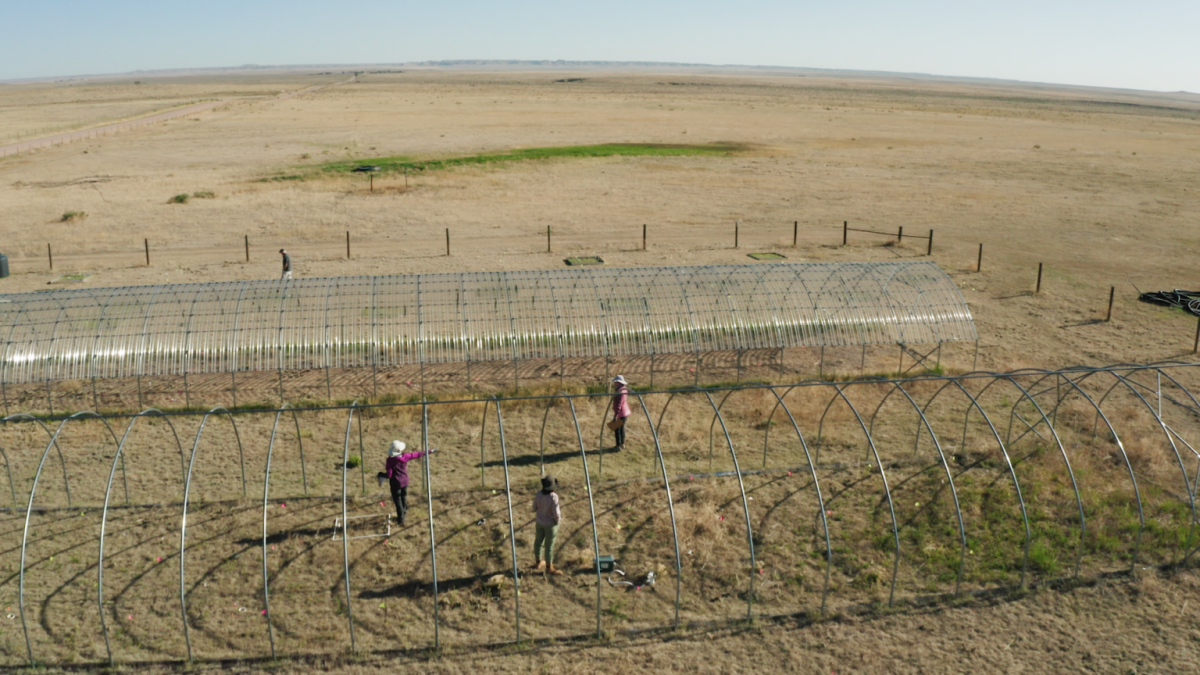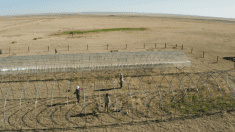HARARE, Zimbabwe (Reuters) — A scorching drought in southern Africa that led to widespread crop failure could nudge African nations to finally embrace genetically modified crops to improve harvests and reduce grain imports.
The drought, which extends to South Africa, the continent’s biggest corn producer, has been exacerbated by an El Nino and follows dry spells last year that affected countries from Zimbabwe to Malawi.
Oxfam has said 10 million people, mostly in Africa, face hunger because of droughts and poor rain.
That has brought GM crops to the fore, especially corn, which is a staple crop grown and consumed in most sub-Saharan countries.
Read Also

Prolonged drought causes unprecedented productivity loss: Study
Colorado State University — Extreme, prolonged drought conditions in grasslands and shrublands would greatly limit the long-term health of crucial…
Many African countries have banned GM crops, arguing that they will cross-contaminate other plants, pollute the environment and have long-term health effects for humans.
For example, Zimbabwe says GM crops may initially be resistant to pests, but the resistance could break down over time.
However, GMO advocates say the fears are not scientifically proven and that poor African farmers are likely to benefit most from reduced use of pesticides, lower production costs, higher yields and high prices for crops.
The African drought’s impact is particularly serious for Zimbabwe, where the economy has struggled for five years to recover from a catastrophic recession marked by one billion percent hyperinflation and widespread food shortages.
The country does not accept GM corn imports, and when it has accepted emergency GM corn aid, it has been milled under security watch.
“GM crops are one of the alternative solutions for reducing hunger on the continent among many others, which include good agronomic practices,” Jonathan Mufandaedza, chief executive officer of the National Biotechnology Authority of Zimbabwe, a government agency.
The United States, Brazil and India are the world’s largest growers of GM crops, while South Africa is the only African country producing GM corn on a commercial scale.
Sixteen percent of Zimbabwe’s population requires food aid this year. The government plans to import up to 700,000 tonnes of corn, but its usual sources of corn, such as Zambia and Tanzania, are facing lower harvests this year. As a result, it could end up receiving GM corn after all.
This year, South Africa, which produces more than 40 percent of southern African corn, may need to import up to five million tonnes of corn because of to drought, said Grain SA, the country’s largest producer group.
Perceptions are shifting.
For example, Getachew Belay, an African expert on GM crops, said Burkina Faso Sudan have recently started growing GM cotton commercially.
“Historically, Africa has been a laggard to accept new agricultural technologies,” Belay said.
“For GM crops, much of the problem lies in the perception, exaggerated fear and conflicting messages sent to policy making.”
Zambia experienced a severe drought in 2002 that left millions in need of food aid, but it rejected GM corn offered by donors, citing inadequate scientific information.
However, higher education minister Michael Kaingu told parliament last month his country now embraces GM crops.
“We recognize that modern biotechnology has advanced worldwide and, as a nation, we cannot afford to ignore the benefits of this technology,” Kaingu said.
“We are alert and prepared to deal with possible adverse risks.”
It is a growing trend on the continent, and Belay said Ethiopia had amended its biosafety laws to allow tests on GM cotton, thanks to pressure from the textile industry, which is advocating for the production of cheaper cotton in that country.
Kenya, Uganda, Malawi, Swaziland, Nigeria and Ghana have all been conducting trials on GM crops, he said.
Seed companies are well placed to benefit from increased use of GMOs in Africa. Monsanto conducted trials of GM corn and cotton in some African countries, including Zimbabwe, from 2001-05.
However, the transition from tests to commercial growing has been slow, a reminder of the die-hard attitudes toward GM crops.
Belay said a major factor that could influence Africa to start growing GM corn was whether China would grow GM rice, which it has developed but not released for production.
“The real issue seems to me is lack of capacity, both physical and human, to enforce regulation,” Belay said.
“Thus attitude is changing from ‘rejection’ to a kind of ‘wait until we have capacity to regulate.’ “














